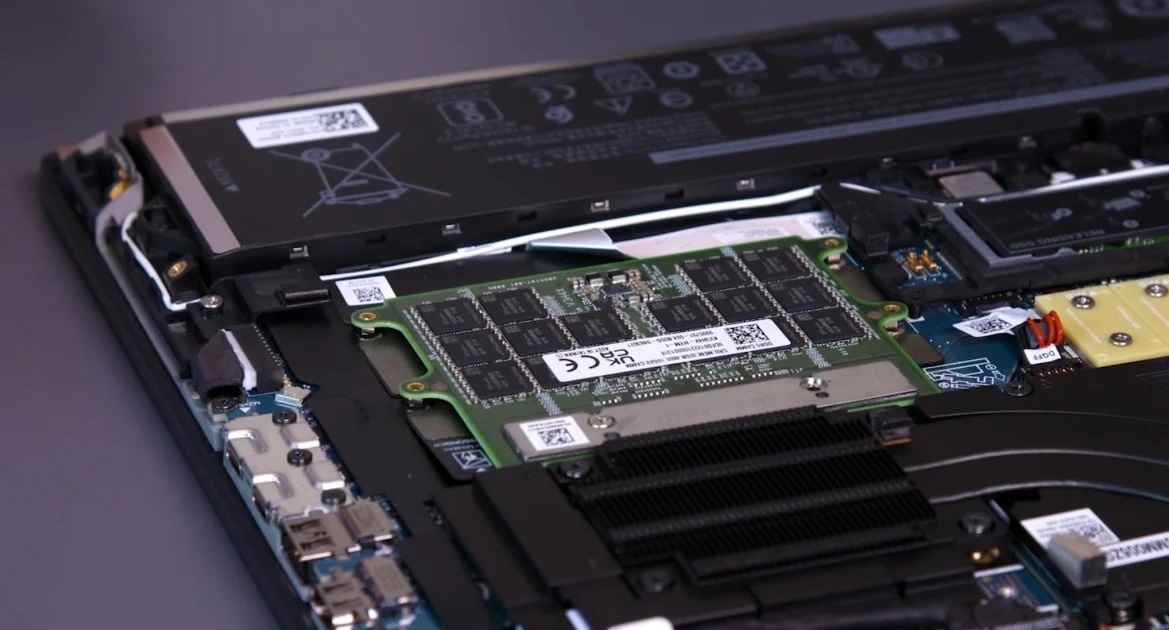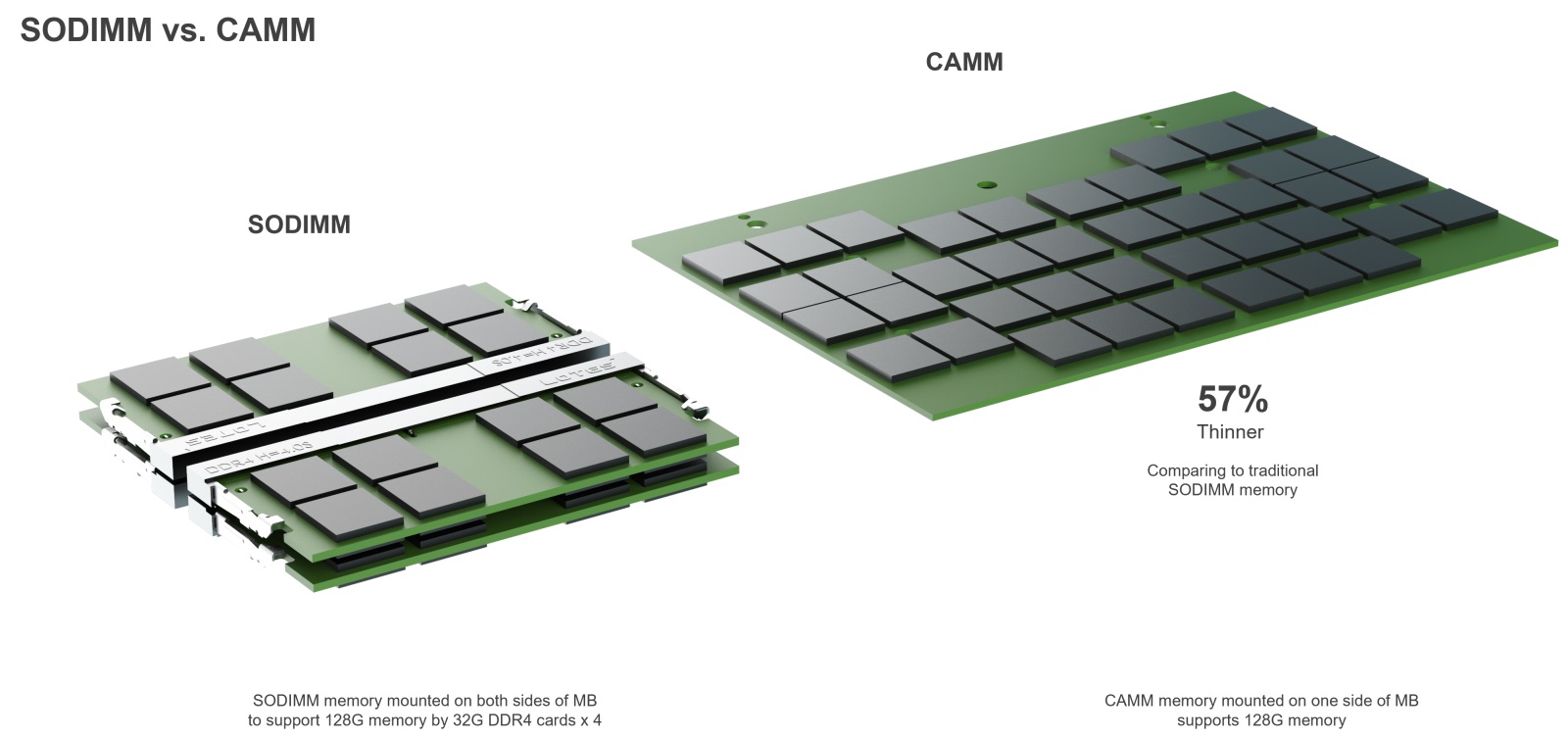JEDEC gives future laptops a memory boost by ratifying CAMM2
JEDEC’s changing the future of laptops with their new CAMM2 memory standard
JEDEC has officially ratified their CAMM2 (Compression Attached Memory Module) common standard, and it promises to change the future of laptops. CAMM2 is an updated version of Dell’s CAMM standard, which they open sourced after its reveal.
Why is CAMM2 important? The simple answer is that it helps laptop manufacturers to add a lot of RAM to thin and light devices. CAMM memory setups are thinner than equivalent SODIMM based systems. On top of that, JEDEC has designed CAMM2 with both DDR5 and LPDDR5/5X flavours.
Due to spatial constraints, a growing number of laptops use soldered DDR, or LPDDR memory chips. This is bad news for upgrades, as this make memory upgrades unviable for anyone without excellent soldering skills. The CAMM memory standard gives laptop makes a slimmer DRAM option that leaves room for potential user upgrades. This is great news for anyone who wants to upgrade their laptop with 128GB of memory, or more.
DDR5 and LPDDR5/5X CAMM2s cater to distinct use cases. DDR5 CAMM2s are intended for performance notebooks and mainstream desktops, while LPDDR5/5X CAMM2s target a broader range of notebooks and certain server market segments.
While JESD318 CAMM2 defines a common connector design for both DDR5 and LPDDR5/X, it is crucial to note that the pinouts for each differ. To support different motherboard designs, intentional variations in mounting procedures between DDR5 and LPDDR5/X CAMM2s prevent the mounting of a module where it should not go.
As announced earlier this year, JESD318 CAMM2 supports stackable CAMM2s: dual-channel (DC) and single-channel (SC). By splitting the dual-channel CAMM2 connector lengthwise into two single-channel CAMM2 connectors, each connector half can elevate the CAMM2 to a different level. The first connector half supports one DDR5 memory channel at 2.85mm height while the second half supports a different DDR5 memory channel at 7.5mm height. Or, the entire CAMM2 connector can be used with a dual-channel CAMM2. This scalability from single-channel and dual-channel configurations to future multi-channel setups promises a significant boost in memory capacity.
(Image from Dell Technologies)
Memory manufacturers are backing CAMM2
Samsung and Micron have already confirmed that they plan to create CAMM-based memory modules. Now that JEDEC have ratified a CAMM-based memory standard, other DRAM manufacturers will follow suit.
Micron has teased plans to create CAMM memory modules with capacities of over 192GB. Both manufacturers are also aiming to push the speeds of these modules to higher levels.
JEDEC’s new CAMM memory standard will allow more future thin and light laptops to be upgradable. This is great news for anyone who requires a lot of DRAM for their specific workloads. Most consumer-grade laptops do not ship with much memory. This makes user upgradability a vital option for many laptop users, as laptops with large DRAM configurations out of the box are often incredibly expensive.
You can join the discussion on JEDEC ratifying their CAMM2 memory standard on the OC3D Forums.





